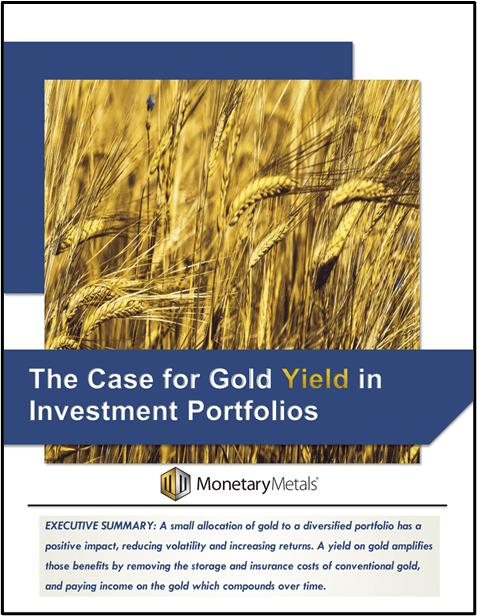The Anti-Concepts of Money: Velocity
If you’ve read the What is Money? essay from this Anti-Concepts of Money series we can now discuss the Anti-Concept of Velocity.
That pseudo-equation MV=PQ described in the What is Money? essay leads us to the anti-concept velocity.
The Anti-Concept of Velocity
Even in the gold standard, money supply is not a physical object that possesses attributes such as distance. There is nothing which is changing in distance. Therefore, there is nothing, whose change in distance is measured by this pseudo-variable called velocity.
According to Wikipedia:
“The velocity of money is a measure of the number of times that the average unit of currency is used to purchase goods and services within a given time period. The concept relates the size of economic activity to a given money supply, and the speed of money exchange is one of the variables that determine inflation. The measure of the velocity of money is usually the ratio of the gross national product (GNP) to a country’s money supply.”
There is a lot to unpack here. Let’s start with the basic premise relating velocity to inflation (this anti-concept is addressed later in this Anti-Concepts of Money Series). The very idea of an increase in velocity accompanied by falling prices is rendered impossible to even imagine. But this exact scenario occurs if producers increase their efficiency, and hence increase the supply of goods. It also occurs if the economy grows and the monetary system becomes more efficient to accommodate, clearing more transactions with the same quantity of money.
As with the other anti-concepts, velocity attempts to unite essentially different things into the same word. And this blots out reasoning about certain other things. An economy that is growing in efficiency and goods supply is not the same as one where the government is printing and doling out free money, though both may cause the average dollar to turnover more frequently.
The Average Dollar?
Although the word velocity connotes an object in motion, the definition clarifies that it’s not describing an object nor motion. It is defined as the number of turnovers of an average unit of money. As discussed above, a higher rate of turnover does not necessarily cause higher prices, nor necessarily even correlated with higher prices. Also, higher prices can occur with lower turnover (as would occur if the wheat crop were destroyed in war).
Is it valid to calculate an average of all dollars in the system? Some of those dollars are sitting in retirees accounts, slowly being spent down.4 Others are freshly-borrowed dollars, paid by corporations to workers, who produce goods to sell—thus pushing down prices—as well as buy goods.
There is no such thing as the average dollar. Velocity is calculated by performing arithmetic, but the result has no bearing on reality. One may as well add apples and oranges (or divide this sum by 2 to get the average fruit supply).
Velocity is just a fudge factor, needed to balance that pseudo-equation, to give it the appearance of working. It is an attempt to quantify the question about Mary, Joe, Bill, and the grocery store—not to answer why that dollar finally settled in someone’s bank account and did not keep bidding up prices forever.
Bid and Offer and Bitcoin
Velocity encourages another conceptual error. It makes it harder to distinguish between bid and offer. We know that Mary bought Joe’s computer. OK, but did Mary pay Joe’s offer price? Or did Joe come to Mary and accept her bid price? If the former predominates in the used-computer market, then the price of used computers will rise. If it predominates across the economy, then all prices will rise. However, it’s also possible that Joe was desperate to pay his landlord. He took whatever Mary was willing to pay (presumably one buck above the pawn shop). If this is predominating in the economy, then prices will be falling.
In a discussion about bitcoin on Twitter, someone said something that baffled me, at first. He said he wanted bitcoin not to be used as a medium of exchange for goods. I asked why (most bitcoiners want bitcoin to circulate). And his reasoning was that it would cause bitcoin to lose value, and he said that higher bitcoin velocity would mean higher prices in bitcoin terms, per that pseudo-equation.
It is interesting to compare that pseudo-equation to a real scientific equation, like the general gas equation:
PV = nRT
P Pressure
V Volume
n amount of substance (in moles)
R ideal gas constant
T temperature
This equation predicts and explains internal combustion engines, refrigerators, and many other inventions. That is because the equation actually works. If you increase the temperature of a sealed container of gas, then its pressure must go up. And you can measure this increase.
We debunk the Monetarist Equation and offer a better theory here:
Make sure to subscribe to our YouTube channel and weekly newsletter to stay up to date on the latest breaking news happening in the markets and how to protect yourself.
Want to talk with us about our Gold Fixed Income products? Schedule a call with a Relationship Manager today!
Additional Resources for Earning Interest on Gold
If you’d like to learn more about how to earn interest on gold with Monetary Metals, check out the following resources:
In this paper we look at how conventional gold holdings stack up to Monetary Metals Investments, which offer a Yield on Gold, Paid in Gold®. We compare retail coins, vault storage, the popular ETF – GLD, and mining stocks against Monetary Metals’ True Gold Leases.
The Case for Gold Yield in Investment Portfolios
Adding gold to a diversified portfolio of assets reduces volatility and increases returns. But how much and what about the ongoing costs? What changes when gold pays a yield? This paper answers those questions using data going back to 1972.













Leave a Reply
Want to join the discussion?Feel free to contribute!